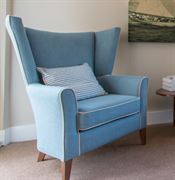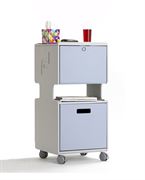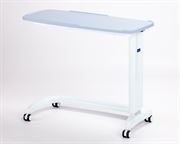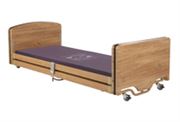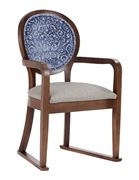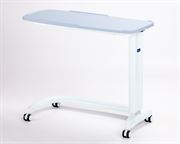Creating communal spaces in hospitals is an essential aspect of designing a healthcare environment that fosters community, comfort, and healing. Hospital furniture and NHS furniture play a crucial role in creating such spaces for residents and patients. In this blog, we will explore how we create communal spaces in hospitals and the importance of healthcare furniture in achieving this.
/41 for web.jpg)
Why create communal spaces in hospitals?
Hospitals can be stressful and isolating places, especially for patients who are in the hospital for an extended period. Creating communal spaces can help alleviate some of the stress and isolation experienced by patients and their families. Indeed, communal spaces provide an opportunity for patients and their families to connect with one another, creating a sense of community and support.
In addition, communal spaces can help patients feel more comfortable and at ease in the hospital environment. They provide a space for patients to relax and take a break from the clinical aspects of their care. This can have a positive impact on patient outcomes, as patients who feel more comfortable and at ease may experience less anxiety and stress.
/60-sf-whiteleaf-centre-aylesbury for web.jpg)
How do we create communal spaces in hospitals?
At Renray Healthcare, we know that creating communal spaces in hospitals involves designing areas where patients and their families can come together to socialize, relax as well as take a break from the clinical aspects of their care. These spaces can take many forms, from large open areas to smaller, more intimate spaces.
Hospital furniture and NHS furniture are critical components in creating communal spaces in hospitals. The right furniture can help create a welcoming and comfortable environment that encourages patients and their families to spend time together. Furniture should be durable, easy to clean, and designed with patient safety in mind.
/10 for web.jpg)
Examples of furniture that can be used to create communal spaces in hospitals include:
- Lounge chairs and sofas: These can be used to create comfortable seating areas where patients and their families can relax and socialize.
- Dining chairs: These provide a space for patients and their families to share meals together.
- Activity tables: These can be used for board games, puzzles, and other activities that patients and their families can do together.
- Benches: These can be used in outdoor spaces, providing a space for patients and their families to get fresh air and enjoy nature.
- Storage solutions: Storage solutions such as lockers and cabinets can be used to provide patients and their families with a secure place to store their belongings while they spend time in communal spaces.
The design of communal spaces should also consider the needs of patients with disabilities or mobility issues. Spaces should be designed with accessibility in mind, ensuring that all patients and their families can access and use the communal areas comfortably.
Creating communal spaces in hospitals is an essential aspect of designing a healthcare environment that promotes community, comfort, and healing. The right furniture can help create a welcoming and comfortable environment that encourages patients and their families to spend time together, providing a space for socialization, relaxation, and a break from the clinical aspects of their care. By prioritizing the creation of communal spaces, hospitals can create a more positive and supportive environment for patients and their families.
For more information about the communal furniture we stock at Renray Healthcare please call us on 01606 593 456 or email us at info@renrayhealthcare.com


